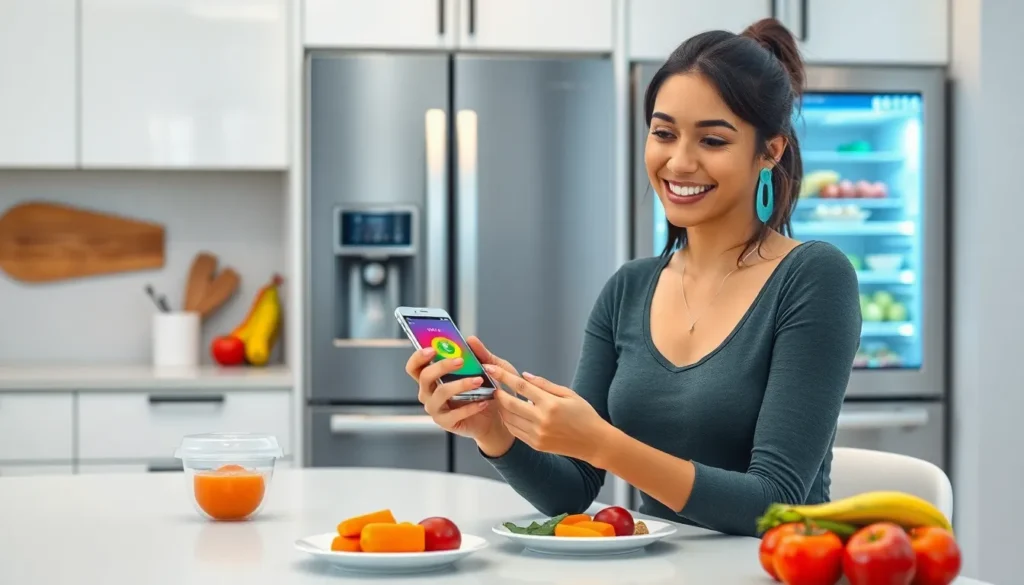Table of Contents
ToggleImagine coming home after a long day, only to find your chores done and your favorite snack waiting for you. Sounds like a scene from a sci-fi movie, right? Well, AI-powered home robots are turning that dream into reality. These little marvels of technology are not just for the Jetsons anymore—they’re here to make life easier, one dust bunny at a time.
Overview of AI-Powered Home Robots
AI-powered home robots serve various functions, making daily tasks more manageable. These robots can vacuum floors, mop surfaces, and even manage laundry. Advanced navigation systems allow them to navigate homes independently, avoiding obstacles while efficiently completing chores.
Facial recognition technology enhances user interaction, enabling robots to identify family members and respond to individual preferences. Voice command features provide convenience, allowing users to instruct robots hands-free. Some models also integrate with smart home systems, coordinating tasks with other devices like smart lights or thermostats.
Market research indicates a growing trend in household adoption of AI robots. Estimates show that the global home robotics market could reach $35 billion by 2025, demonstrating significant potential. Many consumers seek AI robots for their ability to save time and reduce the burden of routine tasks.
Examples of popular AI-powered home robots include the Roomba for vacuuming and the Braava for mopping. These devices continue to improve, offering features such as scheduled cleaning and automated return to charging stations. User-friendly interfaces attract tech-savvy individuals who appreciate seamless integration into their daily routines.
Investments in AI technology fuel the rapid advancement of robotics, making smarter and more capable machines. The continuous evolution of these devices enhances their functionality and appeal. As technology progresses, the possibilities for AI-powered home robots expand, leading to increased integration in households worldwide.
Key Features of AI-Powered Home Robots

AI-powered home robots offer a variety of features that enhance daily living. Their efficiency stems from advanced technologies that simplify household tasks.
Smart Navigation
Smart navigation technology allows robots to move smoothly throughout homes. Utilizing sensors and cameras, these devices map surroundings in real time. They can detect obstacles, such as furniture and pets, ensuring safe cleaning paths. Many robots also feature adaptive learning, which enables them to remember room layouts over time. This capability allows for quicker and more efficient navigation during each cleaning cycle. Some models even resume cleaning after recharging, providing continuous service. Overall, smart navigation significantly increases the convenience of automation in daily chores.
Voice Control Capabilities
Voice control capabilities enhance interaction between users and robots. Users can issue commands using simple phrases, allowing for hands-free operation. Many robots integrate with popular voice assistants, enabling seamless coordination within smart homes. Features like personalized responses improve user experience as robots learn individual preferences. Some models also provide status updates vocally, keeping users informed on task progress. The inclusion of voice control makes operating these robots intuitive and accessible for all family members. Such functionality represents a significant leap toward more interactive and user-friendly home automation tools.
Benefits of AI-Powered Home Robots
AI-powered home robots offer numerous advantages that improve daily living standards significantly.
Time-Saving
Time management improves with AI-powered home robots. They take over repetitive tasks like vacuuming and mopping, allowing users to focus on more important activities. For instance, a robotic vacuum can operate independently on a set schedule, ensuring a clean home without user intervention. This efficiency leads to significant time savings, with studies indicating that households may reclaim up to 10 hours a month. By automating tedious chores, families can dedicate that time toward hobbies, social activities, or family bonding.
Enhanced Security
Security gets a boost from AI-powered home robots. Many models come equipped with surveillance features that monitor homes in real time. Advanced cameras and sensors allow these robots to detect unusual activity and send alerts directly to smartphones. Homeowners gain peace of mind knowing their space is actively monitored, especially when they’re away. Additionally, some robots can patrol specific areas, enhancing the overall safety of a property. This capability lowers the risk of break-ins and enhances home security measures.
Popular Models on the Market
Several AI-powered home robot models dominate the market, showcasing unique features and capabilities. Consumers can choose from various options tailored to specific household needs.
Model Comparisons
Roomba stands out for its vacuuming efficiency, utilizing advanced sensors for optimal coverage. Braava excels in mopping, leveraging precision technology for effective floor cleaning. Both models feature scheduled cleaning and automated charging. Other competitors include Roborock, known for its hybrid vacuuming and mopping capabilities, and Ecovacs, offering advanced navigation with mapping functions. Price points range from $250 to $1,000, depending on the model and features.
User Feedback
User feedback highlights satisfaction in the ease of use and convenience provided by these robots. Roomba users appreciate its thorough cleaning and low maintenance requirements. Braava’s fans commend its ability to handle a variety of hard floor types effectively. Common concerns among users include occasional navigation issues and the need for proper maintenance to prevent clogging. Overall, ratings often exceed 4 out of 5 stars, reflecting a strong endorsement for these devices by households aiming to simplify routines.
Future Trends in AI-Powered Home Robots
Future advancements in AI-powered home robots focus on enhancing functionality and user experience. Industry experts predict a shift towards more personalized services, tailoring robot behavior to individual user preferences. Predictive analytics could enable these robots to anticipate household needs, making them even more efficient.
Moreover, integration with Internet of Things (IoT) devices is likely to deepen. AI robots may interact seamlessly with other smart devices, creating a cohesive network for home automation. For example, coordinating cleaning schedules with thermostat settings could optimize energy consumption while keeping homes cleaner.
In addition, improvements in machine learning algorithms will drive smarter navigation systems. Enhanced sensors and mapping technologies promise to improve movement around obstacles and through complex spaces. This innovation allows for faster and more thorough cleaning.
Manufacturers might also prioritize sustainability in their designs. Eco-friendly materials and energy-efficient features are expected to become standard in new models. An increasing number of consumers values environmentally responsible products, pushing companies to innovate.
Furthermore, as security concerns rise, AI-powered robots will likely incorporate advanced surveillance capabilities. Real-time monitoring features can provide homeowners with immediate alerts, enhancing safety. Enhanced facial recognition technology will also contribute to personalized security measures.
Market research supports these trends. Projections indicate the global home robotics market could exceed $35 billion by 2025. Growing interest in products like Roomba and Braava showcases consumers’ demand for efficiency and convenience in household chores.
With such developments on the horizon, AI-powered home robots are set to redefine everyday life, transforming homes into smarter and more efficient living spaces.
AI-powered home robots are revolutionizing the way households operate. With their ability to handle chores like vacuuming and mopping they free up valuable time for families to enjoy life. The integration of smart technology ensures these robots adapt to individual preferences and seamlessly interact with other devices.
As the market continues to grow and evolve the future looks promising. Innovations in machine learning and IoT integration will likely enhance their capabilities even further. Homeowners can expect a new level of convenience and security as these robots become essential members of the household. Embracing this technology not only simplifies daily tasks but also elevates the overall quality of life.




